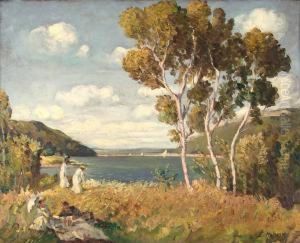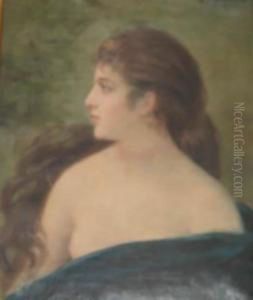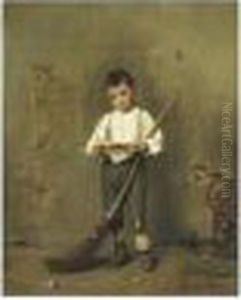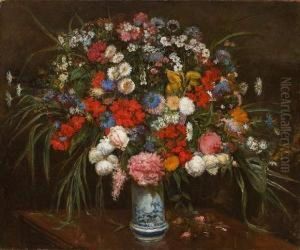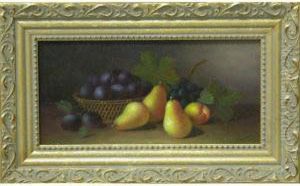E. Moreau Paintings
Emile Moreau, commonly referred to as E. Moreau, was a French artist known for his contributions to the world of sculpture and medal-making during the 19th century. Born in 1827 in France, he was part of a period rich in artistic innovation and cultural change, coming into prominence during the Second Empire under Napoleon III and continuing through the early Third Republic.
Moreau studied under renowned artists and sculptors of his time, which allowed him to refine his skills and develop a distinct style. Although not as widely recognized as some of his contemporaries, Moreau's work was appreciated for its detail, craftsmanship, and the ability to capture the essence of his subjects. His oeuvre includes a variety of medals and sculptures, with subjects ranging from notable figures and historical events to allegorical themes.
During his lifetime, Moreau's talents were acknowledged through commissions and exhibitions. He participated in the Paris Salon, an official art exhibition of the Académie des Beaux-Arts in Paris, where artists of the time aspired to exhibit their work. His creations were a part of the artistic movements that valued neoclassicism and later, the shifts towards more naturalistic and impressionistic approaches.
E. Moreau's death in 1906 marked the end of a career that had spanned much of the 19th century. Though he may not have achieved the same level of fame as some of his peers, his contributions to French art were significant, particularly in the realm of medallions and small-scale sculptures. His works are considered collectible artifacts today and can be found in various museums and collections around the world, serving as a testament to the skill and artistry of the period.
